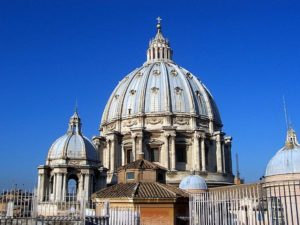Index Librorum Prohibitorum Personality Type
Books prohibited by the Catholic Church (16th–20th centuries)
The Index Librorum Prohibitorum ("List of Prohibited Books") was a list of publications deemed heretical or contrary to morality by the Sacred Congregation of the Index (a former Dicastery of the Roman Curia), and Catholics were forbidden to read them.There were attempts to ban heretical books before the sixteenth century, notably in the ninth-century Decretum Glasianum; the Index of Prohibited Books of 1560 banned thousands of book titles and blacklisted publications, including the works of Europe's intellectual elites. The 20th and final edition of the index appeared in 1948, and the Index was formally abolished on 14 June 1966 by Pope Paul VI.The Index condemned religious and secular texts alike, grading works by the degree to which they were seen to be repugnant to the church. The aim of the list was to protect church members from reading theologically, culturally, or politically disruptive books. Such books included works by astronomers, such as the German Johannes Kepler's Epitome Astronomiae Copernicanae (published in three volumes from 1618 to 1621), which was on the Index from 1621 to 1835, works by philosophers, such as the Prussian Immanuel Kant's Critique of Pure Reason (1781), and editions and translations of the Bible that had not been approved. Editions of the Index also contained the rules of the Church relating to the reading, selling, and preemptive censorship of books.The canon law of the Latin Church still recommends that works should be submitted to the judgment of the local ordinary if they concern sacred Scripture, theology, canon law, or church history, religion or morals. The local ordinary consults someone whom he considers competent to give a judgment and, if that person gives the nihil obstat ("nothing forbids"), the local ordinary grants the imprimatur ("let it be printed"). Members of religious institutes require the imprimi potest ("it can be printed") of their major superior to publish books on matters of religion or morals.Some of the scientific theories contained in works in early editions of the Index have long been taught at Catholic universities. For example, the general prohibition of books advocating heliocentrism was removed from the Index in 1758, but two Franciscan mathematicians had published an edition of Isaac Newton's Principia Mathematica (1687) in 1742, with commentaries and a preface stating that the work assumed heliocentrism and could not be explained without it. A work of the Italian Catholic priest and philosopher Antonio Rosmini-Serbati was on the Index, but he was beatified in 2007. Some have argued that the developments since the abolition of the Index signify "the loss of relevance of the Index in the 21st century."J. Martínez de Bujanda's Index Librorum Prohibitorum, 1600–1966 lists the authors and writings in the successive editions of the Index, while Miguel Carvalho Abrantes's Why Did The Inquisition Ban Certain Books?: A Case Study from Portugal tries to understand why certain books were forbidden based on a Portuguese edition of the Index Librorum Prohibitorum from 1581.

